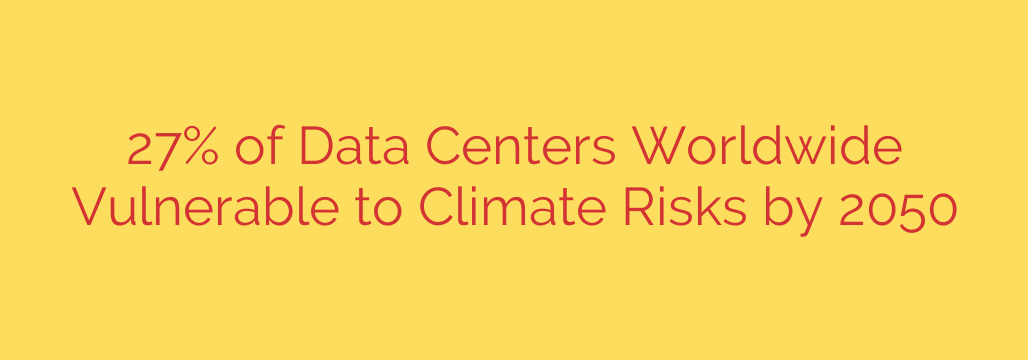
The digital backbone of our modern world, data centers, faces a significant and growing threat from climate change. As extreme weather events become more frequent and predictable risks like sea level rise and increased temperatures intensify, the physical infrastructure housing our data is increasingly vulnerable. This poses a critical challenge for businesses, governments, and the global economy.
Recent assessments highlight the alarming scale of this impending crisis. Projections indicate that by the year 2050, a substantial 27% of the world’s data centers could be situated in areas facing significant climate risks. This isn’t a distant problem; it’s one that requires urgent attention and strategic planning today.
The primary threats identified include flooding, sea level rise, extreme heatwaves, and other severe weather events. Data centers are typically large, energy-intensive facilities often located near urban hubs or coastlines, sometimes in areas chosen for convenient access or existing infrastructure. Unfortunately, many of these locations are becoming increasingly susceptible to the impacts of a changing climate.
Flooding poses a direct risk to critical equipment located at ground level or in basements, disrupting power and connectivity. Sea level rise exacerbates the flood risk for coastal facilities. Extreme heatwaves challenge the massive cooling systems essential for preventing equipment overheating, potentially leading to outages or permanent damage. Severe weather, such as hurricanes, typhoons, and intense storms, can disrupt power grids, damage buildings, and impede access for maintenance and repair.
The implications of such widespread vulnerability are profound. Disrupted data center operations can lead to:
- Significant financial losses for businesses reliant on cloud services and online operations.
- Interruption of essential public services and critical infrastructure.
- Irreversible data loss.
- Increased operational costs due to the need for emergency cooling or repairs.
- Damage to reputation and customer trust.
Addressing this challenge requires proactive measures. Organizations operating data centers, as well as those heavily reliant on their services, must prioritize climate resilience in their planning. Key steps include:
- Thorough Site Selection: Carefully evaluate future climate risks, including projected flood levels, heat trends, and storm paths, when choosing new data center locations or assessing existing ones.
- Resilient Design: Incorporate features like elevated infrastructure, enhanced flood defenses, robust cooling systems capable of handling higher ambient temperatures, and redundant power and connectivity.
- Supply Chain Resilience: Assess and mitigate climate risks within the power grid and telecommunications networks that serve data centers.
- Monitoring and Adaptation: Implement continuous monitoring of environmental conditions and have plans in place to adapt operations during extreme weather events.
- Sustainability Integration: Invest in renewable energy sources and improve energy efficiency to help mitigate the root causes of climate change while also potentially reducing operational costs and increasing power grid resilience.
Ignoring the impact of climate change on critical digital infrastructure is no longer an option. By understanding the risks and investing in resilience and sustainability, we can help ensure the continued availability and reliability of the data services that power our increasingly digital world.
Source: https://datacenternews.asia/story/climate-risks-threaten-27-of-global-data-centres-by-2050








